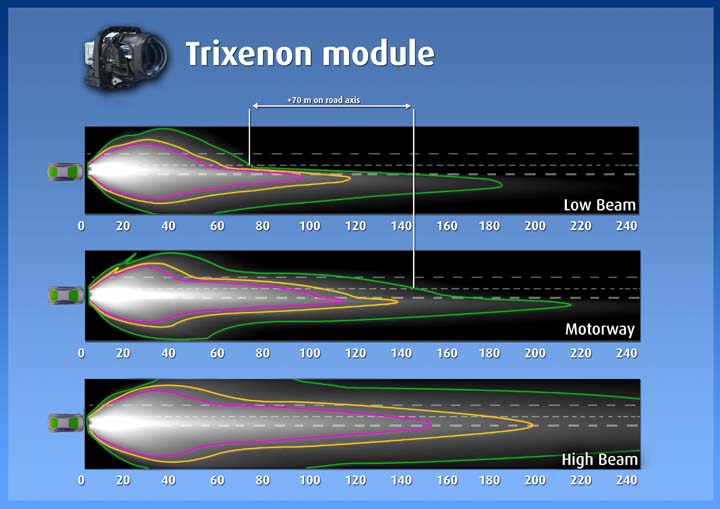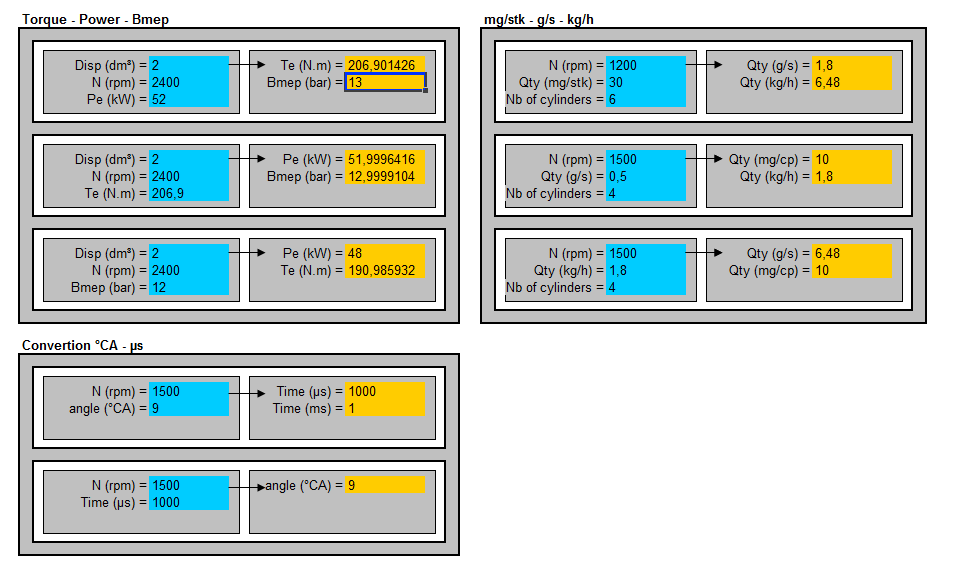Lighting no longer offers simply the low and main beam positions, with AFS (Adaptive Frontlighting System) it can now adapt dynamically to the vehicle speed, road type, environment and the position of other vehicles.
Lighting adaptation
Statistics show that an accident is more than four times more likely to occur at night than during the day. This figure can be reduced thanks to the development of innovative technologies that improve night-time visibility. The AFS offers some lighting options other than the usual low and main beam functions including:
- DBL (Dynamic Bending Light)
This technology embraces road curves with light following the movements of the steering wheel. When taking a turn, the light “bends” to illuminate the road ahead for a better visibility and safety.
- “Motorway” mode
This special low beam function for motorway use increases visibility by 60 meters, giving the driver an additional 1.7 seconds to react at 130 km/hour. The “Motorway” function is activated automatically at speeds above 110 km/hour, or even combined with information from a navigation system. “Motorway” mode is compatible with DBL function. Already allowed in Europe, this technology is available with Halogen, Xenon and LED headlamps.
- “Urban” mode
This special adaptation reduces glare for other road users and pedestrians.
- “Adverse weather” mode
When driving on regular or high speed roads in bad weather conditions, the Adverse Weather system concentrates lighting on certain areas of vision, thus reducing glare due to reflections from wet roads or fog.
- “Tourism” mode

When in countries where people drive on the left-side of the road, this handy system laterally reverses the lighting of right-hand-drive vehicles for an improved automotive experience. The driver just has to activate the system when traveling abroad.
- Tri-Xenon
Xenon has proved over the years how well it performs at night on the road. Powerful, intense and close to daylight, tri-Xenon light improves road safety along with drivers’ visibility.
Operating Principle
The different light distributions for the AFS system are generated by a Xenon projector system that allows three light distributions: Low Beam, Motorway Beam and High Beam. Applying the DBL and the leveling function of the headlamp to those basic light distributions enables all AFS features to be realized. The resulting light flows have been improved with a digital tool specially developed by Valeo.
Advantages of AFS for the carmaker
This wide range of functions can be adapted to each automaker’s specific requirements. These new functions meet both governmental and users demands for improved active safety during night-time driving. All of these active safety functions are visible to the customer. The different functions are not linked specifically to LED, Halogen or xenon lamp use. The different beam shapes are obtained by an internal rotating mirror that does not increase the headlamp’s external dimensions. In the unlikely event of a fault, the lighting returns automatically to the conventional low beam mode.
Advantages of AFS for the user
“Motorway” mode lighting gives the driver an additional 1.7 seconds to react at 130 km/hour. “Adverse Weather” mode improves visibility by reducing glare. These functions take road gradients into account, constantly providing the most suitable and efficient lighting for every situation. The “Tourism” function simplifies the use of the vehicle when driving in foreign countries on the opposite side of the road.
As a conclusion, adaptative frontlighting system can fit car lighting to both internal and external conditions such as vehicle speed, weather conditions or road topoology which is valuable for driver and pedestrians’ safety.
Source: Valeo
Romain Nicolas opinion:
This technology is a big innovation step which is being implemented in more or less every car segment. I don’t see any drawback except maybe the product cost and the adaptation needed for the car manufacturer in terms of controls, wiring and sensors. Visteon and Valeo both provide this product and it would be interesting to know which is the market share and how are positionned these companies with respect to the car manufacturers.




















